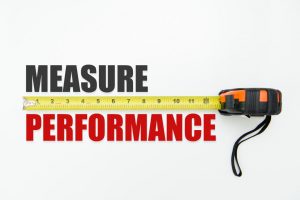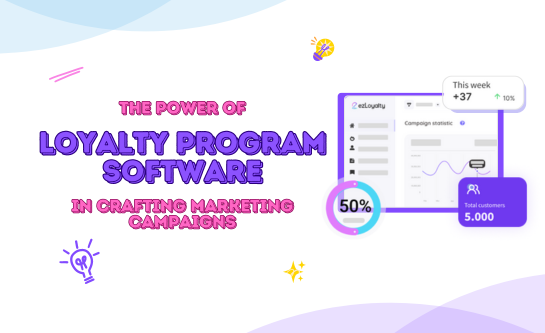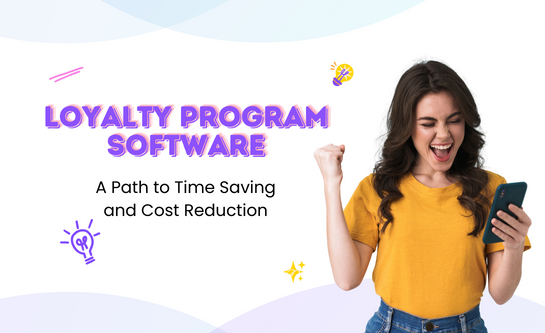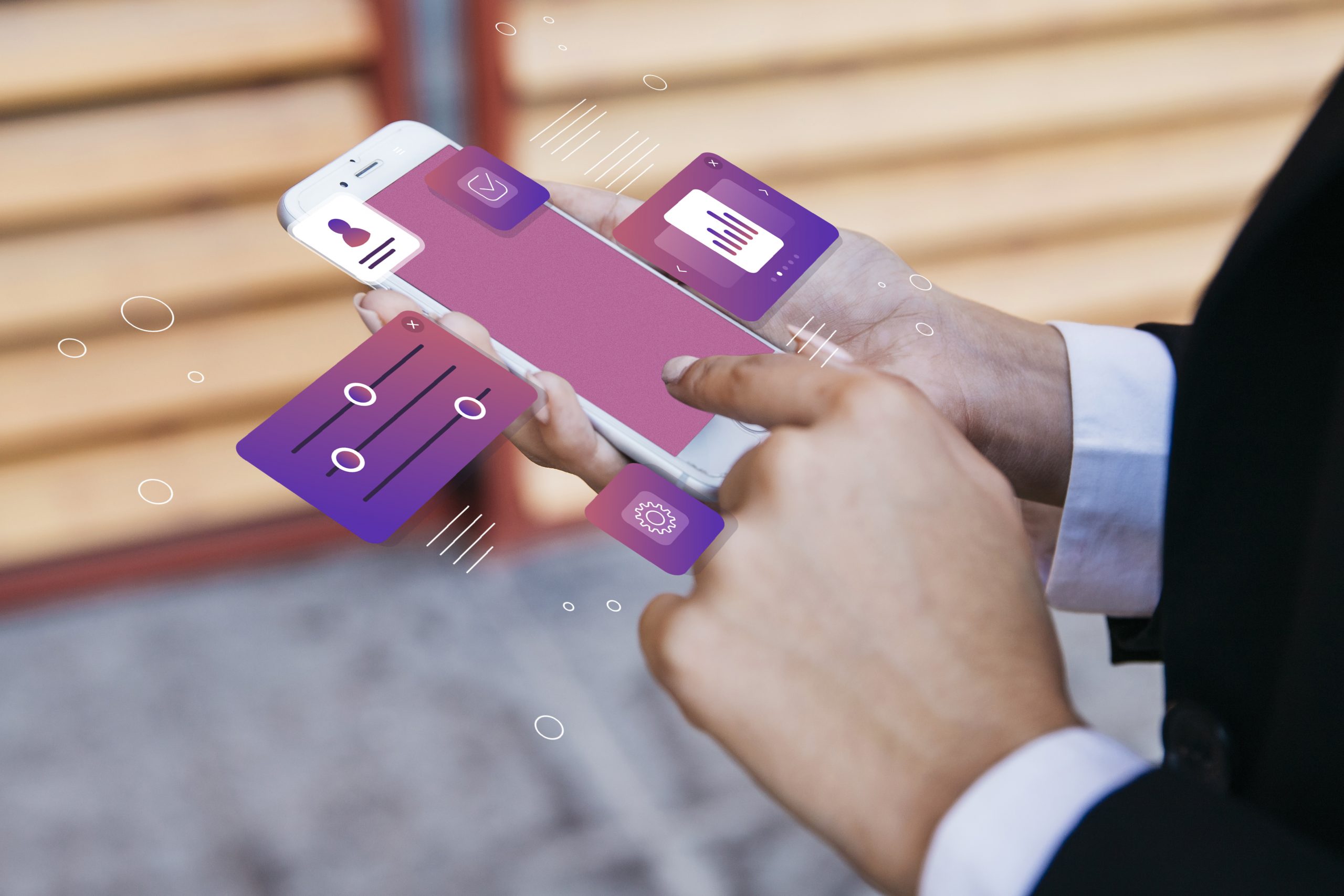Loyalty Program Health Check: How to Measure Performance with KPIs
 May 23th, 2023
May 23th, 2023
 431 views
4 MINS READ
431 views
4 MINS READ
As a business owner, you know that customer loyalty is essential to the success of your company. Creating a loyalty program is an effective way to retain customers and increase sales. However, to ensure that your loyalty program is performing at its best, it’s important to conduct a “health check” using key performance indicators (KPIs). In this article, we will explore the top KPIs to help you measure the health and performance of your loyalty program.

Source: Six Sigma
1. Enrollment Rate
The percentage of customers who sign up for your loyalty program is a crucial key performance indicator (KPI) that shows how well your program’s marketing and promotion efforts are working. A low enrollment rate may indicate that your program is not well-known or that the benefits are insufficient to entice customers.
Promoting your loyalty program through multiple channels, including your website, social media, and email marketing campaigns, is crucial to boosting enrollment rates. Customers should be able to easily sign up for your program and begin earning rewards, and you should ensure that the program’s benefits are clear and appealing. Additionally, enticing customers to sign up for your program by providing them with a bonus or other immediate reward upon registration can be very successful.
2. Redemption Rate
By keeping track of the percentage of rewards that customers redeem, the redemption rate is an essential KPI that measures the effectiveness of your loyalty program’s rewards. A low redemption rate may indicate that your rewards are not sufficiently appealing to encourage repeat purchases, which can have an impact on the program’s overall performance.
Offering a variety of rewards that are relevant to and valuable to your customers is essential if you want to increase your redemption rate. Additionally, you should make sure that the rewards are reachable and simple to redeem in order to attract more customers to your program. Promoting limited-time deals, bonus points for specific purchases, or discounts only available to program members can encourage customers to use their rewards.
Reviewing your rewards catalog on a regular basis to make sure it is still relevant and useful to your customers is another effective strategy. You can keep customers engaged and motivated to participate in your loyalty program by regularly updating your rewards and introducing new options. In addition, fostering customer loyalty and increasing reward redemption rates can be achieved by providing personalized rewards that reflect the preferences and purchase histories of customers.
3. Average Order Value (AOV)
The Average Order Value (AOV) is a crucial KPI to track as it measures the impact of your loyalty program on sales by calculating the average amount customers spend per transaction. A high AOV suggests that your rewards program is effective at increasing the size of each transaction, which is crucial to driving business growth and revenue.
To improve your AOV, it’s important to offer rewards that incentivize customers to spend more. For instance, you could offer bonus points or exclusive discounts for purchases over a specific amount or provide higher reward tiers for customers who spend more over time. This strategy can motivate customers to make larger purchases to maximize their rewards, which can increase your AOV.
Creating targeted promotions that encourage customers to add more items to their cart or upgrade to a higher-priced product can also be an effective way to boost your AOV. Offering personalized recommendations based on customers’ purchase history or browsing behavior can help increase the value of each transaction while also improving the overall customer experience.
Additionally, analyzing your customers’ purchase patterns and preferences can help you identify the best reward options to offer, which can help drive more significant sales and increase your AOV. Continuously testing and optimizing your loyalty program rewards and incentives can help you stay ahead of the competition and drive significant business growth.
4. Customer Lifetime Value (CLV)
The Customer Lifetime Value (CLV) is an important KPI to track as it measures the total amount of revenue a customer generates for your business over their lifetime. A high CLV indicates that your loyalty program is effective at retaining customers and increasing sales over time, which is essential for business profitability and long-term growth.
To improve your CLV, it’s important to create a loyalty program that rewards customers for their long-term loyalty. This could include offering a higher reward tier for customers who have been with your program for a certain amount of time or providing personalized rewards that are tailored to each customer’s interests and preferences. By offering rewards that resonate with customers and meet their needs, you can keep them engaged and motivated to stay loyal to your brand.
Creating targeted promotions that encourage customers to make repeat purchases or refer their friends to your business is also an effective strategy to increase your CLV. For instance, you could offer exclusive discounts or bonus points for repeat purchases, or provide incentives for customers who refer their friends or family to your business. This approach can not only encourage customer loyalty but also help you acquire new customers, which can further boost your CLV.
Regularly analyzing customer data and purchase behavior can also help you identify opportunities to improve your loyalty program and increase your CLV. By understanding your customers’ preferences and shopping habits, you can tailor your rewards and incentives to meet their needs, improve the customer experience, and drive more significant sales over time.

5. Churn Rate
The proportion of customers who leave your loyalty program is known as the churn rate. This key performance indicator measures how well your program keeps customers coming back. A high churn rate may indicate that your rewards are not appealing or that your program does not provide enough value to customers.
You should concentrate on developing a loyalty program that provides customers with ongoing value in order to lower your churn rate. This could be accomplished by providing exclusive discounts, early access to brand-new products, or customized rewards that are based on the requirements of each customer. You can also design specialized promotions to remind customers of the advantages of your loyalty program or to encourage them to return to redeem their rewards. You can also use customer feedback to make your program better and make sure it meets their needs and expectations.
6. Net Promoter Score (NPS)
The Net Promoter Score (NPS) is a critical KPI that measures customer loyalty and satisfaction by evaluating the likelihood that customers will recommend your business to others. A high NPS indicates that your loyalty program is cultivating positive word-of-mouth and strong customer relationships, which can lead to increased sales and revenue.
To improve your NPS, it’s crucial to focus on creating a loyalty program that provides excellent customer service. This can be achieved by offering personalized rewards and communications, ensuring your program is user-friendly, and providing exceptional customer support. Additionally, gathering and analyzing customer feedback can help you identify areas for improvement and ensure that your loyalty program meets your customers’ needs and expectations.
By prioritizing customer satisfaction and loyalty, you can improve your NPS and cultivate a loyal customer base that will recommend your business to others, resulting in increased sales and revenue.
7. COCA (Cost of Customer Acquisition)
The amount your business spends to acquire a new customer is known as the cost of customer acquisition (COCA). This key performance indicator (KPI) is important to keep track of because it measures how well your loyalty program brings in new customers. A low COCA may indicate that your loyalty program is a successful strategy for expanding your business and acquiring new clients. Divide the number of new customers you acquire through your loyalty program by your total marketing and advertising costs to determine your COCA.
Focus on developing a loyalty program with compelling benefits that entice new customers to improve your COCA. A sign-up bonus, a high-value reward for new customers, or promotion of your program across multiple channels are all examples of this. You can also monitor where new customers come from and focus your marketing and promotion efforts on the channels that bring in the most new business.
8. ROI (Return on Investment)
The ratio of your loyalty program’s revenue to its operating expenses is called the return on investment (ROI). Because it measures the profitability of your loyalty program, this KPI is important to monitor. Your loyalty program may be a successful strategy for increasing profits and sales if it has a high return on investment (ROI). Divide the total cost of running your loyalty program by the revenue it generates to determine your return on investment (ROI).
Focusing on developing a loyalty program with a high return on investment for your business is the best way to boost your ROI. This could mean focusing on high-value customers who bring in the most money for your company or providing rewards that are simple to administer and affordable. You can also keep track of how much it costs to run your program and look for ways to cut costs while still making it work well.
9. Active Members
Because it shows how well your loyalty program keeps customers coming back over time, it’s important to keep track of the number of active members. Customers who have recently engaged in some way with your loyalty program or made a purchase are considered active members. Your program may be providing customers with ongoing value and benefits if there are a lot of active members.
You should concentrate on developing a loyalty program that provides customers with ongoing benefits and value in order to increase the number of active members. This could be as simple as providing early access to new products, personalized rewards, or exclusive discounts. You can also use customer feedback to figure out where your program can be better and make sure it meets your customers’ needs and expectations.
10. Frequency of Purchases
Because it measures how frequently customers purchase from your business, the frequency of purchases is an important KPI to monitor. Your loyalty program may be effective at motivating repeat purchases and fostering long-term customer relationships if customers make purchases frequently. You can divide the total number of purchases by the number of distinct customers who have made a purchase to determine the frequency of those purchases.
You should concentrate on developing a loyalty program that encourages repeat purchases in order to increase purchase frequency. This could mean giving rewards for every purchase or giving bonus points for making a lot of them. You can also make specific promotions to get customers to come back and buy more, or you can give each customer personalized recommendations based on their interests and preferences. You can increase customer loyalty and drive long-term growth for your business by increasing the frequency of purchases.
Are you in need of support for your loyalty campaigns? ezLoyalty offers access to the knowledge and skills of a team of experienced marketing professionals, all eager to assist you in maximizing the potential of your customer loyalty program.
To avail of our services, you can reach out to us directly, explore our website, or send us an email at info@ezloyalty.io . And if you’re keen on gaining deeper insights into loyalty marketing, campaigns, and metrics, don’t forget to subscribe to our blog for valuable additional information.
 Back to blog page
Back to blog page






































